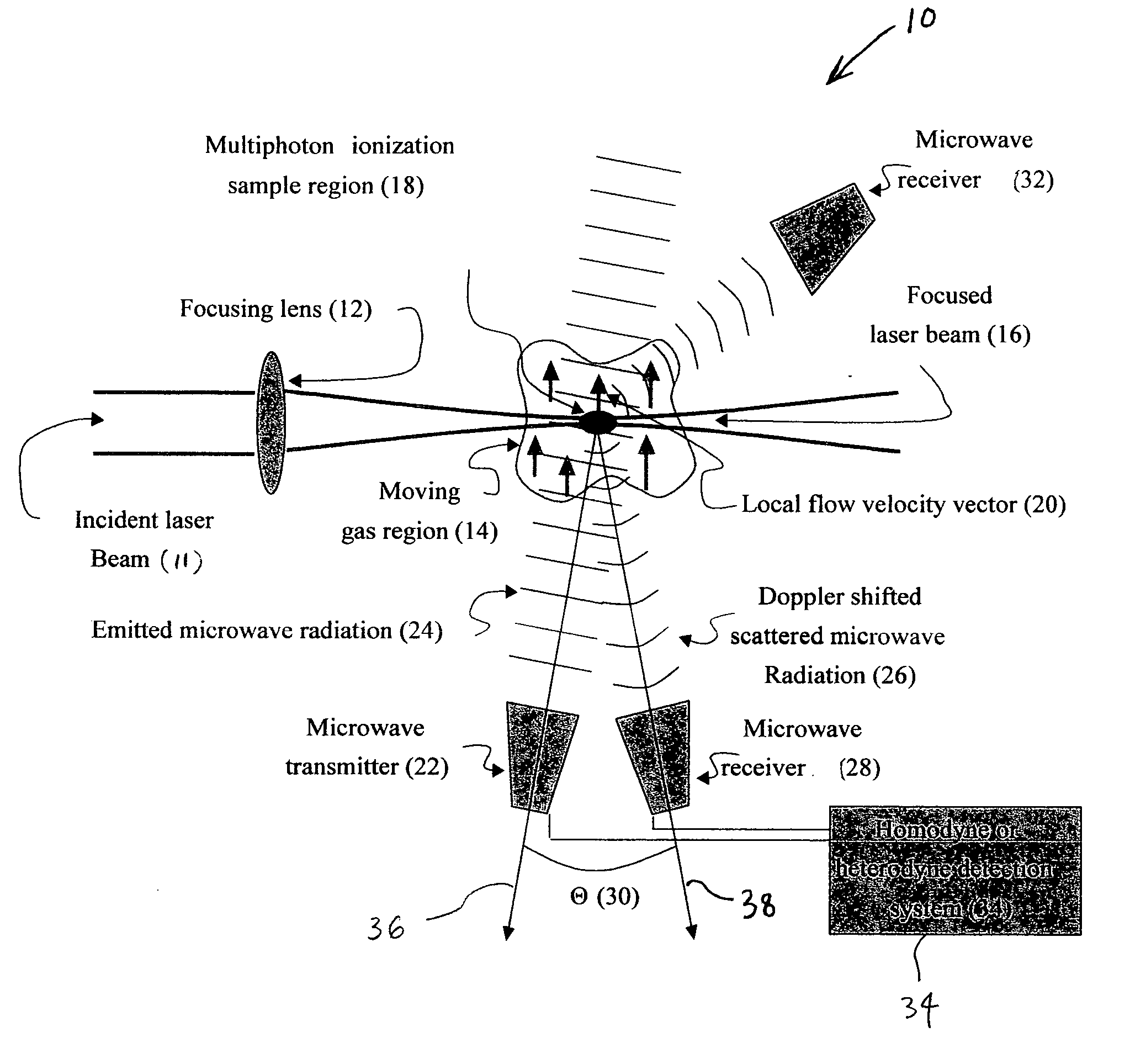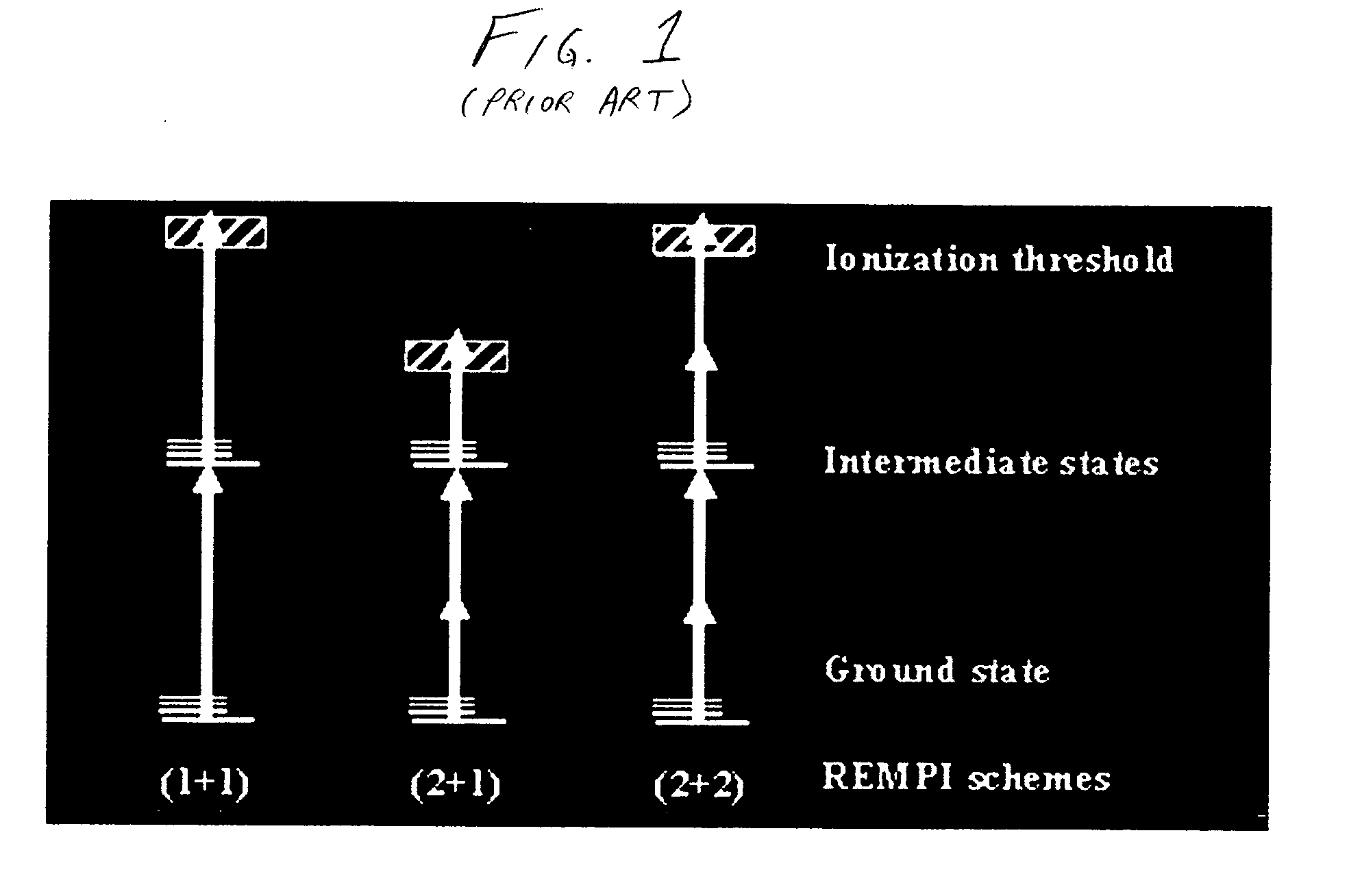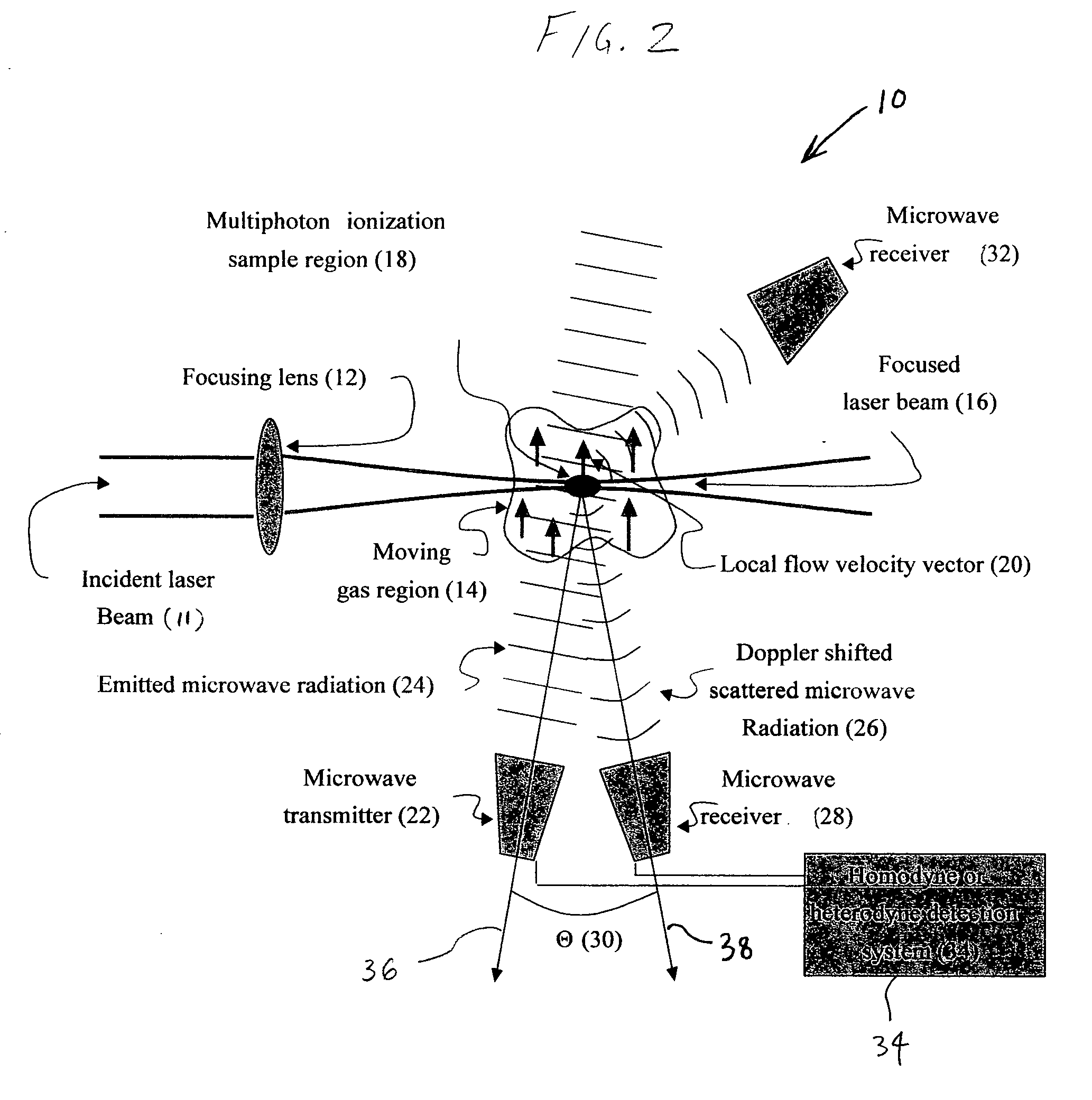Method and apparatus for remotely monitoring properties of gases and plasmas
a technology of gas and plasma, applied in the field of object properties determination, can solve the problems of particle “slip, preventing remote measurement and detection of gas and plasma properties, and limited application of conventional rempi
- Summary
- Abstract
- Description
- Claims
- Application Information
AI Technical Summary
Benefits of technology
Problems solved by technology
Method used
Image
Examples
Embodiment Construction
[0033]The present invention relates to a method and apparatus for remotely monitoring properties of gases and plasmas. The present invention is operable with conventional REMPI techniques, such as those shown in FIG. 1.
[0034]FIG. 2 is a diagram showing an apparatus constructed in accordance with the present invention for remotely monitoring properties of gases and plasmas. The apparatus, indicated generally at 10, includes a pulsed incident laser beam 11 and a lens 12 for producing a focused laser beam 16. The laser beam 16 is focused into a gas or plasma region 14 to create a multiphoton, ionization sample region 18. The ionized sample region 18 could be created using known REMPI techniques, or any other, suitable ionization technique. A short laser pulse produces high power, but has little energy (e.g., a few millijoules). When the laser beam 11 is tuned to a multiphoton transition of a species, such as oxygen, the laser beam 11 has the capability of producing a small plasma volum...
PUM
| Property | Measurement | Unit |
|---|---|---|
| Temperature | aaaaa | aaaaa |
| Concentration | aaaaa | aaaaa |
| Density | aaaaa | aaaaa |
Abstract
Description
Claims
Application Information
 Login to View More
Login to View More - R&D
- Intellectual Property
- Life Sciences
- Materials
- Tech Scout
- Unparalleled Data Quality
- Higher Quality Content
- 60% Fewer Hallucinations
Browse by: Latest US Patents, China's latest patents, Technical Efficacy Thesaurus, Application Domain, Technology Topic, Popular Technical Reports.
© 2025 PatSnap. All rights reserved.Legal|Privacy policy|Modern Slavery Act Transparency Statement|Sitemap|About US| Contact US: help@patsnap.com



